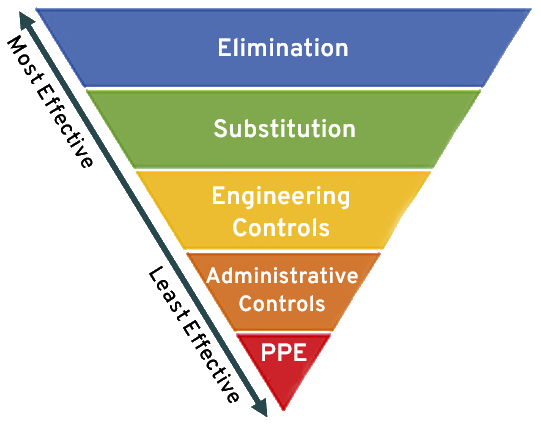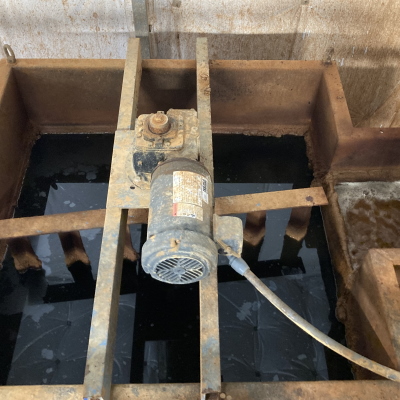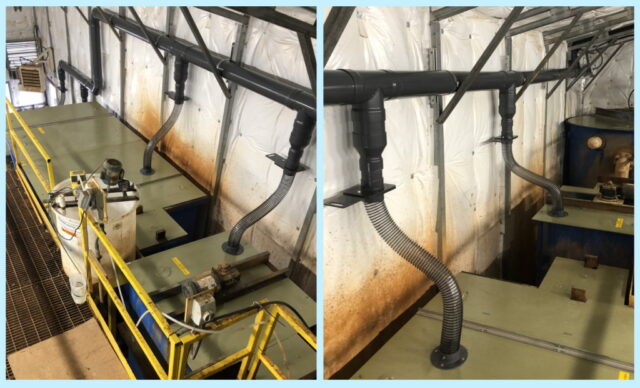The Centers for Disease Control and Prevention (CDC) National Institute for Occupational Safety and Health (NIOSH) defines a Hierarchy of Controls with the rungs: elimination, substitution, engineering controls, administrative controls and personal protective equipment (PPE). The hierarchy is arranged beginning with the most effective controls and proceeds to the least effective. You can’t eliminate every hazard, but the closer you get to the top, the nearer you are to the ideal that makes people healthier and safer.
This concept was the justification basis for a maintenance project that was initiated to address a significant safety hazard at one of our client’s wastewater treatment plants.

The inverted pyramid of the NIOSH Hierarchy of Controls is a framework and visual guide for controlling workplace hazards and protecting employees.
The site contained a metals precipitation room that housed eight open tanks of various sizes and capacities. The nature of the chemical process released ammonia which resulted in dramatic equipment corrosion and, most importantly, posed a potential threat to human safety. U.S. Water stressed the importance of an engineering solution, the client wanted to mitigate the hazard with PPE as a first step while other options were evaluated. PPE is the lowest rung, and usually least effective measure, on the Hierarchy of Controls. In this case, the room required full face respirators, uncomfortable at best.

“It was a challenge to staff the plant, and nobody wanted to even get close to that room as the PPE necessary to control the vapors was simply unbearable,” reported U.S. Water Operations Manager Ron Benderski. Ron added, “The client’s capital equipment investment was also deteriorating at an alarming rate because of the corrosive environment.”
A U.S. Water Maintenance Manager collaborated with senior members of his team and prepared a proposal to correct the issue. The proposal included fitting seven of the eight tanks with custom covers constructed from ¼” structural FRP fiberglass sheeting and stiffened with ¼” aluminum angle bars. The client agreed to the project and two expert fabricators from U.S. Water’s Maintenance team were quickly dispatched to the site after acquiring the materials.
Constructed on-site to accommodate existing infrastructure, some of the tank equipment had to be reinstalled over the top of the covers. Equipped with a slide gate valve and 4” pipe, each cover was vented through a 6” manifold to a corrosion resistant electrical fan providing a constant negative pressure vacuum exhausting to the building’s exterior. The covers were constructed with hinges, handles, and sample ports for easy access for sampling and routine maintenance. The work was completed in just 10 business days.

These photos show four of the seven new covers installed. Flexible tank piping feeds fumes to a common manifold that is then vented by a corrosion resistant exhaust fan (top right of second photo)[/caption]
“It’s a night and day difference,” described U.S. Water Health & Safety Coordinator Jim Stinnett. “There’s virtually no sign of vapors and the staff and client are extremely happy with the result. Besides a much safer environment, a reasonable return on investment should be realized from the expected increase in equipment longevity, staff retention, and PPE savings.”
This project is a great example of how our experts assess and attack challenging problems with effective solutions while keeping the client and safety at the center. Using proven principles, like the NIOSH Hierarchy of Controls, as a basis can help guide decisions and ensure they are on a path for success.
This article is part of a series that focuses on all things related to water and wastewater treatment. Targeted to those working in the industry, each TechTip article, written by a U.S. Water operations & maintenance expert, presents relevant topics, timely issues, and lessons learned from the field.




